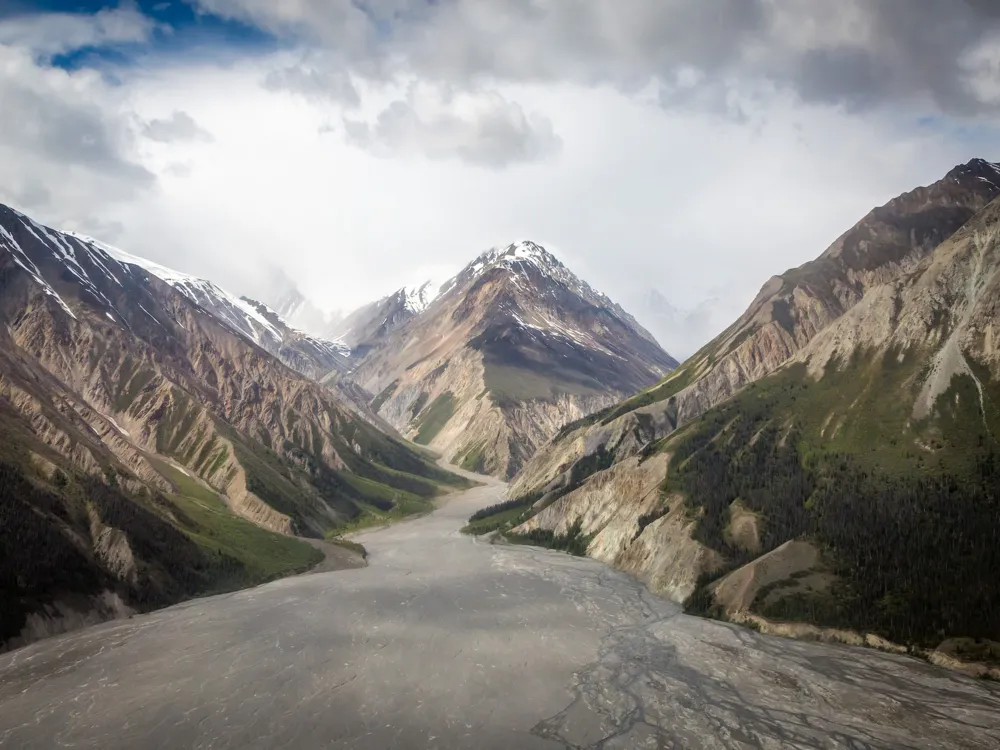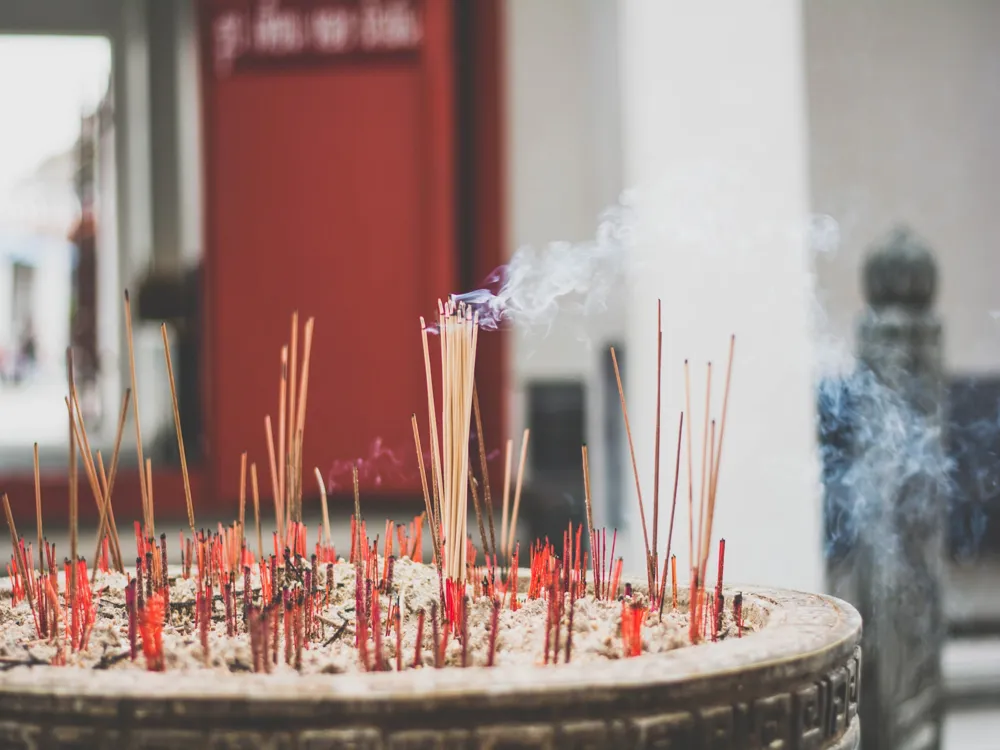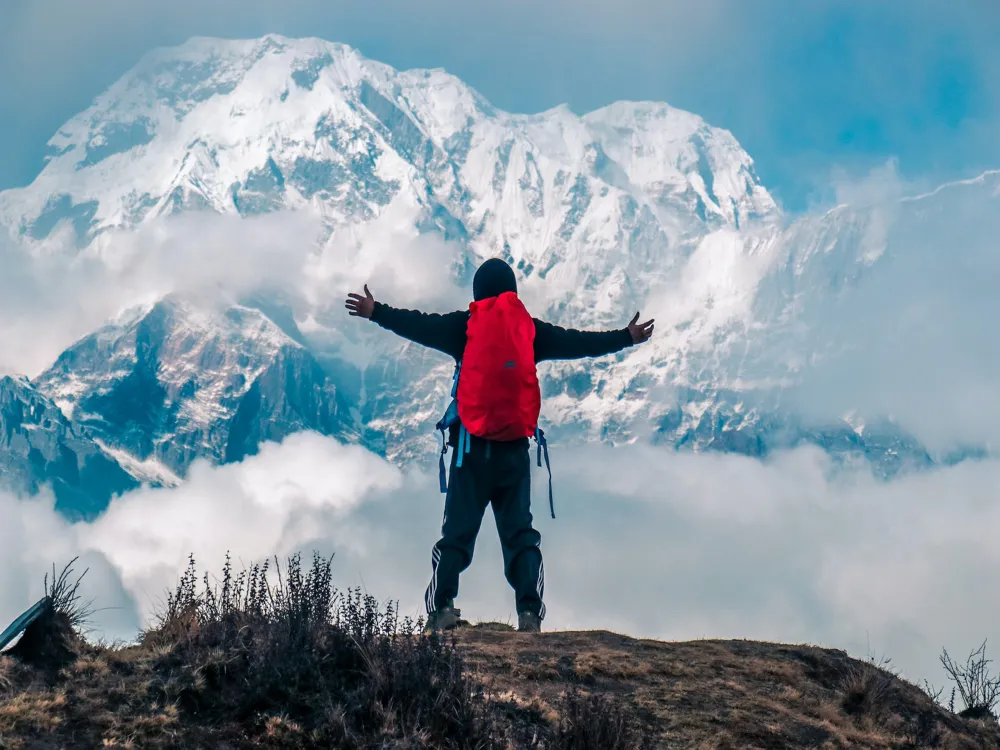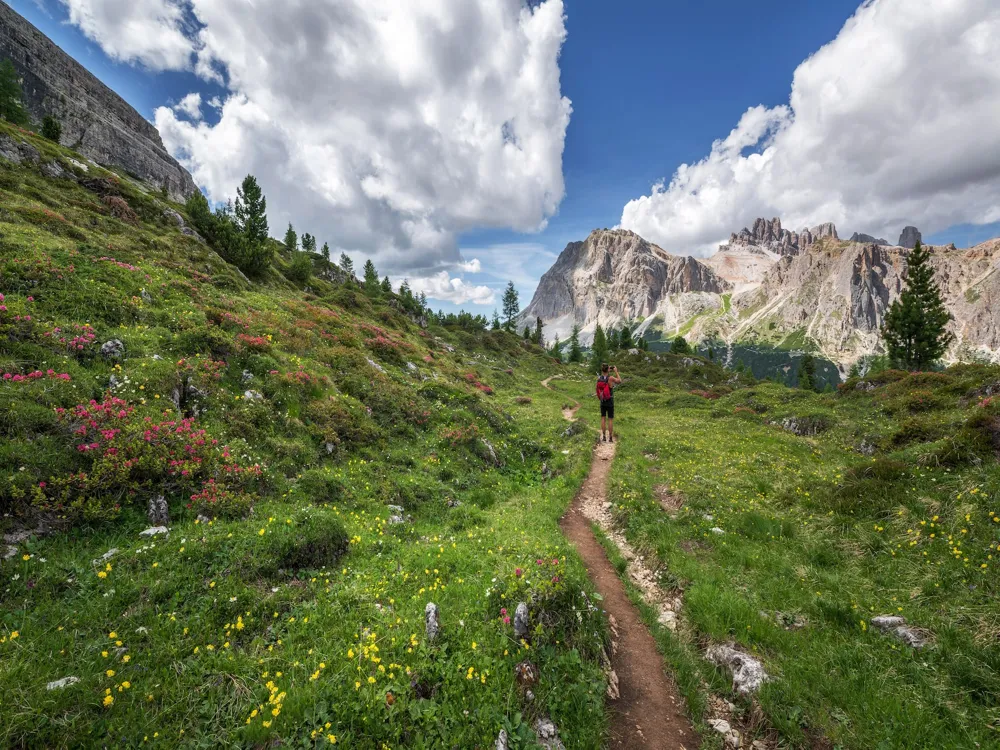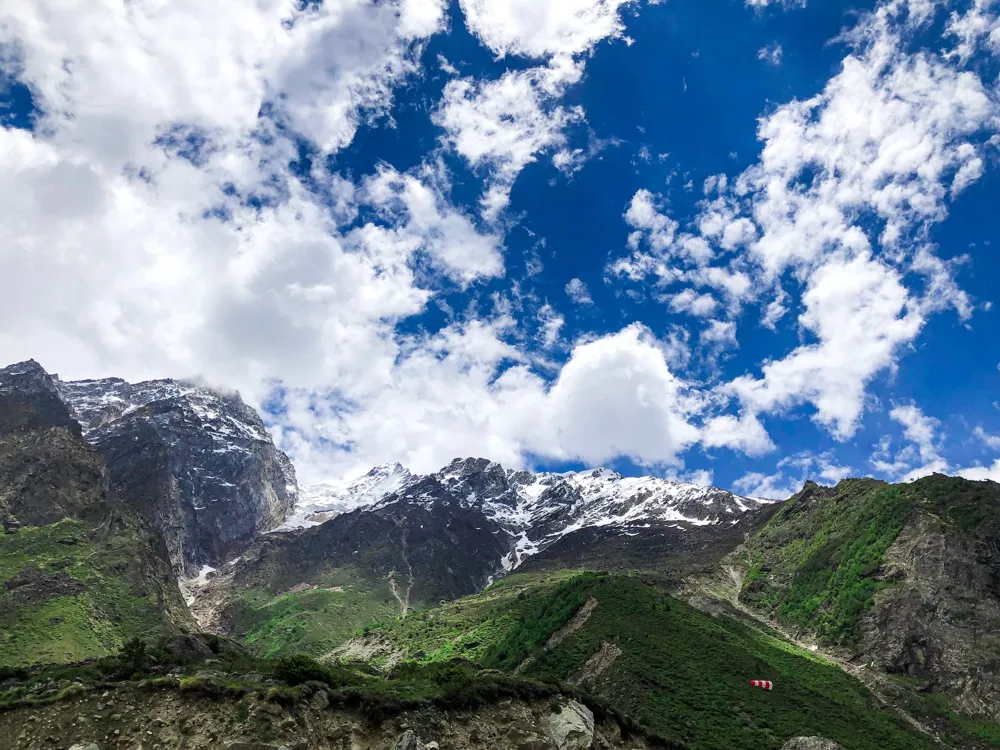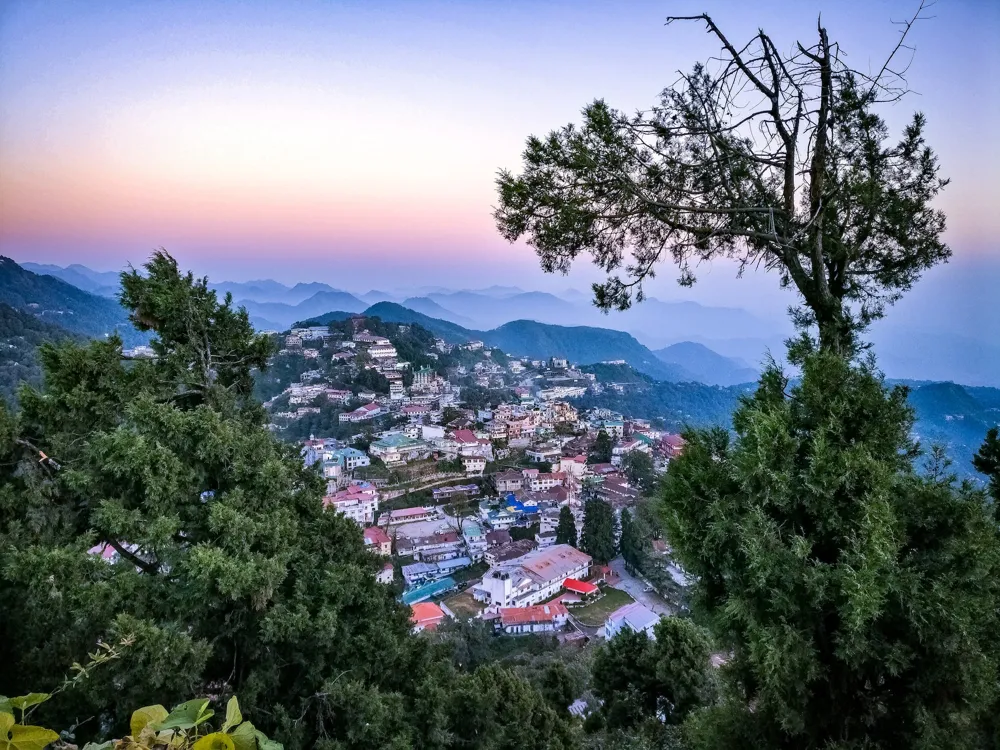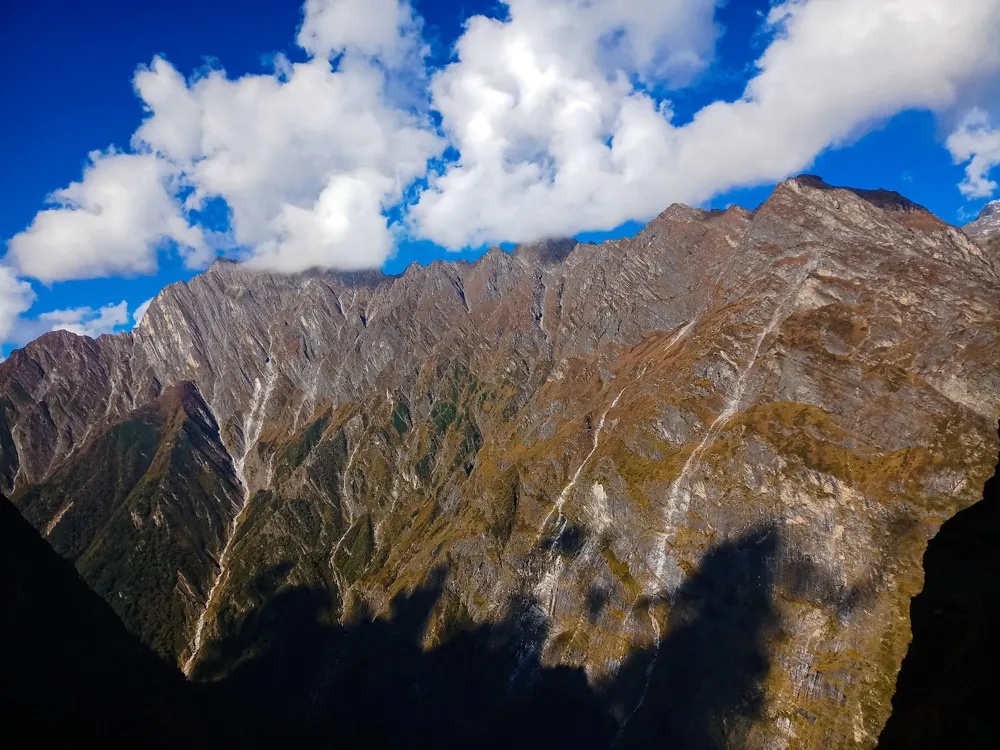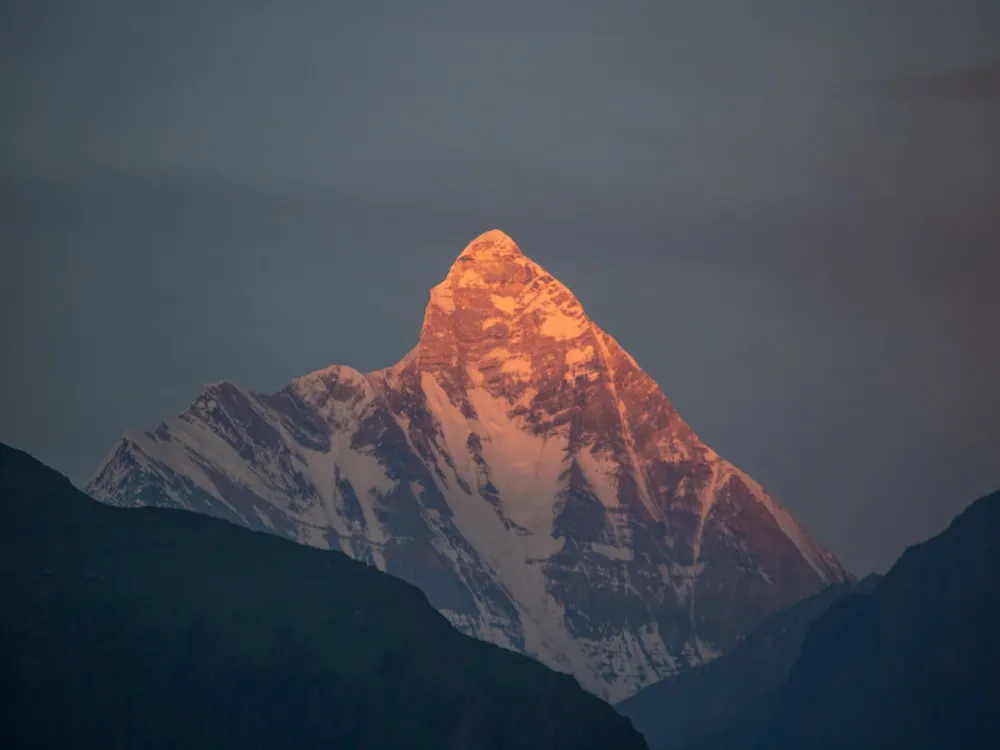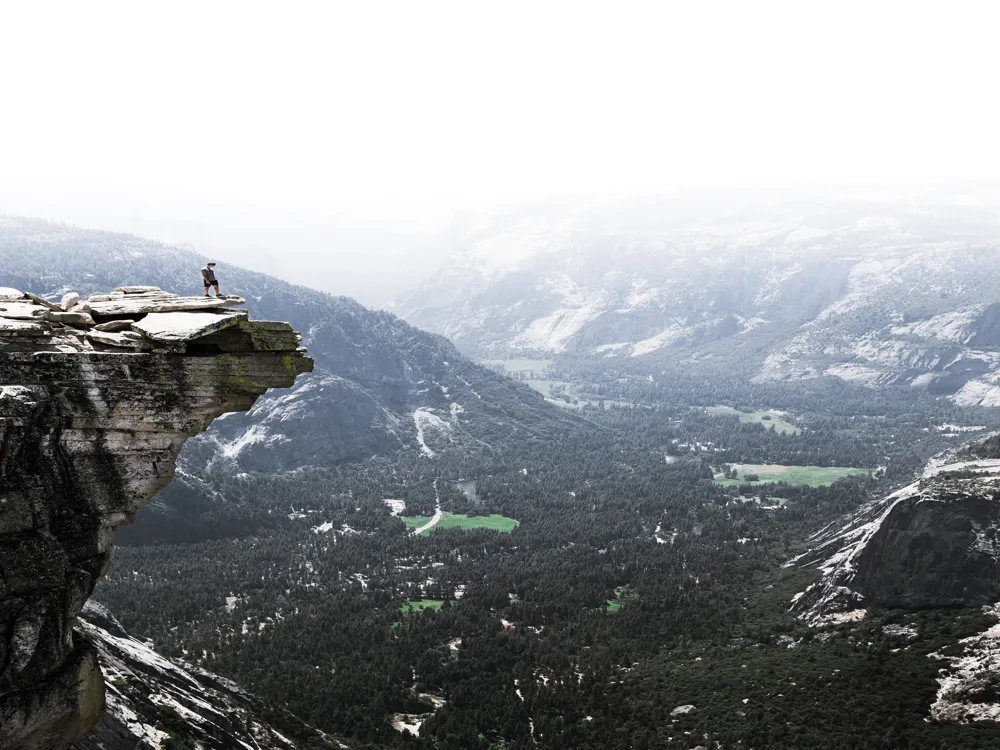Ghangaria, a small village in the Chamoli district of Joshimath Uttarakhand, India, is a serene and picturesque destination. Nestled at an elevation of 3,050 meters above sea level, it serves as the base camp for treks to the Valley of Flowers and Hemkund Sahib. This quaint village, also known as Govindghat, is encircled by forests and towering Himalayan peaks, offering visitors an immersive experience in nature. The journey to Ghangaria is as mesmerizing as the destination itself. The trek from Govindghat to Ghangaria, about 13 km long, winds through lush forests and along the pristine Lakshman Ganga River. The path is dotted with vibrant flora and fauna, making it a haven for nature enthusiasts and photographers. The region's biodiversity is rich, with a variety of endemic and rare species of plants and animals. Despite its remote location, Ghangaria has evolved to cater to the needs of trekkers and pilgrims. During the trekking season, the village bustles with activity, offering basic amenities like guest houses, eateries, and medical facilities. The local culture is deeply rooted in Hindu and Sikh traditions, reflected in the warm hospitality of its residents. The village, however, remains inaccessible during the winter months when it is covered in snow. The serene environment of Ghangaria, combined with its cultural richness and natural beauty, makes it a unique travel destination. It's a place where one can truly disconnect from the hustle of city life and reconnect with nature. The architecture of Ghangaria is a reflection of its geographical and cultural landscape. The buildings in Ghangaria are primarily constructed using locally sourced materials, including stone, wood, and slate. This not only makes the structures sustainable but also gives them a rustic charm that blends seamlessly with the natural surroundings. The design of the buildings in Ghangaria is influenced by the harsh climatic conditions and the need for sustainability. The roofs are generally slanted, allowing snow to slide off easily during the winter months. The use of wood in the construction provides insulation against the cold, while the thick stone walls ensure the buildings are sturdy enough to withstand the elements. Traditional houses in Ghangaria often feature intricately carved wooden doors and windows, showcasing the skilled craftsmanship of the local artisans. The interiors are typically modest, with a focus on functionality. Rooms are designed to retain warmth, often featuring fireplaces or bukharis (traditional wood-burning stoves). In recent years, with the increase in tourism, modern architecture has also found its way into Ghangaria. Newer buildings, including guest houses and hotels, often incorporate elements of traditional architecture while offering modern amenities. This blend of the old and the new adds to the village's charm and makes it an architectural delight for visitors. The ideal time to visit Ghangaria is from June to September when the trekking routes are open and the weather is favorable. The monsoon season brings out the lush greenery and vibrant flowers, making it a visual treat. Essential items include warm clothing, rain gear, sturdy trekking shoes, a first-aid kit, and a flashlight. It's also advisable to carry snacks and water for the trek. Due to the high altitude, acclimatization is crucial. Take it slow and stay hydrated. Be aware of symptoms of altitude sickness and have a basic first-aid kit handy. Ghangaria's culture is unique, and visitors should respect local traditions and customs. Dress modestly, avoid loud noises, and be environmentally conscious. Ghangaria is accessible only by foot or helicopter. The trek starts from Govindghat, which is well-connected by road to major towns like Haridwar, Rishikesh, and Dehradun. For those unable to trek, helicopter services are available from Govindghat to Ghangaria. The nearest airport is Jolly Grant Airport in Dehradun, and the nearest railway station is at Haridwar. From these points, one can hire taxis or take buses to reach Govindghat, the starting point of the trek to Ghangaria. Read MoreOverview of Ghangaria, Joshimath, Uttarakhand
Architecture of Ghangaria
Tips When Visiting Ghangaria
Best Time to Visit
What to Pack
Health and Safety
Respecting Local Culture
How To Reach Ghangaria
Ghangaria
Joshimath
Uttarakhand
NaN onwards
View joshimath Packages
Weather :
Tags : Landmark
Timings : Before sunset,
Last mule to Ghangaria: 4:00 PM
Entry Fee : No entry fee
Planning a Trip? Ask Your Question
Joshimath Travel Packages
View All Packages For Joshimath
Top Hotel Collections for Joshimath

Private Pool

Luxury Hotels

5-Star Hotels

Pet Friendly
Top Hotels Near Joshimath
Other Top Ranking Places In Joshimath
View All Places To Visit In joshimath
View joshimath Packages
Weather :
Tags : Landmark
Timings : Before sunset,
Last mule to Ghangaria: 4:00 PM
Entry Fee : No entry fee
Planning a Trip? Ask Your Question
Joshimath Travel Packages
View All Packages For Joshimath
Top Hotel Collections for Joshimath

Private Pool

Luxury Hotels

5-Star Hotels

Pet Friendly







